
Food
Native Flavours
One simple way Australian cooks can start giving back to the land is by using more native ingredients in their cooking. To this end, Damien Coultard and Rebecca Sullivan have written a book explaining the characters, benefits and uses of a selection of indigenous essentials.
Self-taught cook, food curator, activist, food writer, urban farmer and entrepreneur Rebecca Sullivan is also the founder of The Granny Skills Movement, described as, “a community-supported movement that aims to protect the skills, heritage and traditions of our elders.”
So when her partner Damien Coulthard, who is from Adnyamathanha country, discovered his pop had dementia, she says, “We simply wanted to ensure we protected his culture before all of the stories were lost.”
Part of this drive has been the establishment of their business, Warndu, which translates to ‘good’ in Adnyamathanha language, selling a range of native ingredients. They’ve also published a beautiful book, Warndu Mai (‘Good Food’), which presents descriptions of 60 native foods along with over 80 recipes featuring these delicious, sustainable ingredients.
In protecting Damien’s cultural heritage, the couple are also opening it up to those curious to learn. As Rebecca writes in the introduction to Warndu Mai, “We truly believe food is the pathway
to change.”
“As an example,” she elaborates, “we have seen in our pop-up restaurants people with no knowledge about Aboriginal culture be so curious when they taste these foods for the first time. We create a safe space for people to ask questions they would not normally ask.”
Enthusiasm’s growing
One of the aims of writing Warndu Mai was to encourage more cooks to incorporate native ingredients in their everyday meals, and Rebecca is enthused by the increasing interest.
“We are already seeing demand starting to outweigh supply. We know people are more aware and more open to using these amazing ingredients than ever before. Exciting times for the industry, Indigenous people and the planet.”
And getting started is easy, she says. “These ingredients are easy to sub one thing in and one thing out. Switch out your pepper grinder with native pepper berry, use finger limes instead of lime and lemon, use sea parsley instead of parsley, native mint instead of mint, and so on.”
In setting up your native collection, it’s important to source responsibly to ensure Indigenous communities benefit. For Rebecca, this means “Doing a little research and buying from brands that support or give back to Indigenous communities and that are respecting the culture and knowledge surrounding these foods.”
In the meantime, start by exploring this selection of staples from Warndu Mai.
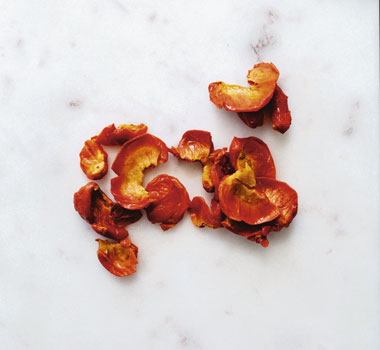
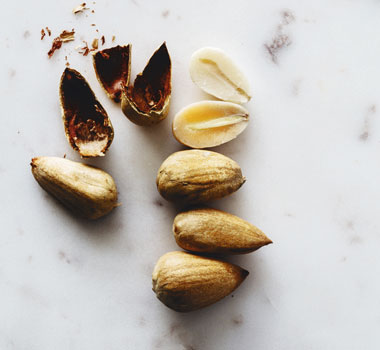
Boonjie tamarind (Diploglottis bracteata)
This bright-red, stunning-looking, tasty, tangy fruit is a refreshing treat eaten raw or it can be cooked creatively in many ways (especially great as a paste, chutney and sauce). With very few trees left remaining in the wild of northern New South Wales, this endangered species is worth using to try to protect it.
Bunya pine (Araucaria bidwillii)
The cones have many kernels inside which need cracking prior to eating. They are best fresh but can also be frozen. The bunya nut is high in protein, carbohydrates and good fat. The flavour reminds me of a pine nut, and the bunya can be used in the same way.
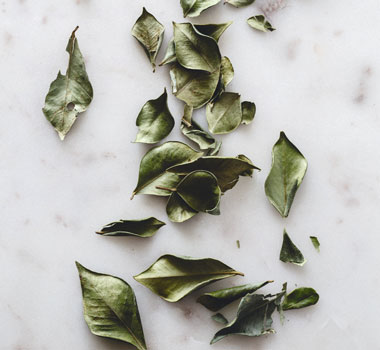

Cinnamon myrtle (Backhousia myrtifolia)
This lovely rainforest tree has cream flowers and cinnamon-scented leaves. While you will probably buy it in dried leaf form, all you need to do is grind it in a spice grinder. Use it in place of traditional cinnamon, though use a little less as it’s much stronger.
Finger lime (Citrus australasica)
Endemic to south-east Queensland and northern New South Wales, the finger lime tree has fruit in a range of vibrant colours, from green through to red. The fruit is rich in folate, potassium and vitamin E, as well as the more usual citrus benefits such as vitamin C. It is used in a variety of ways, from topping ceviche and oysters, to salads and cocktails.
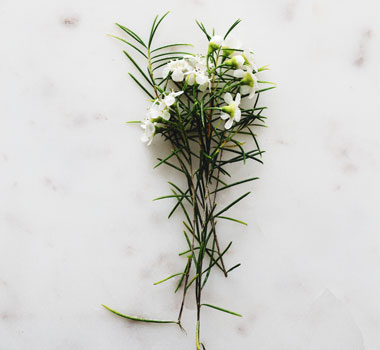

Geraldton wax (Chamelaucium uncinatum)
The leaves of this shrub have the most wonderful aroma and taste like a lemony pine needle. They are delicious in anything with seafood and especially stuffed in whole fish.
Karkalla or Pig face (Carpobrotus rossii)
More succulent than anything else, imagine a juicy, crunchy and salty green. The flowers are edible too and when it fruits, expect salty little fig-like berries in a stunning shade of pink. The plant grows low to the ground, mainly on the coast, but it is super-resilient and can be grown from cuttings. Add to salads, stir-fries, pickle it, ferment it, and eat it!
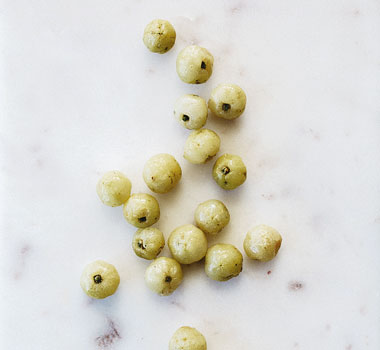

Lemon aspen (Acronychia acidula)
This is a type of citrus bearing small edible fruits that taste like a cross between a lime and a grapefruit with a hint of conifer. It is a rich source of folate, iron and zinc, and also contains magnesium and calcium. Because the lemon aspen is a rainforest species, the fruit may sometimes be referred to as ‘rainforest lemon’. Native to Far North Queensland, but will grow as far south as Sydney and even in South Australia.
Macadamia (Macadamia integrifolia)
Macadamias are great in savoury and sweet dishes, and make amazing nut milk (like, the best). The trees are only native to Australia (even though Hawaii and South Africa sell as much as we do).
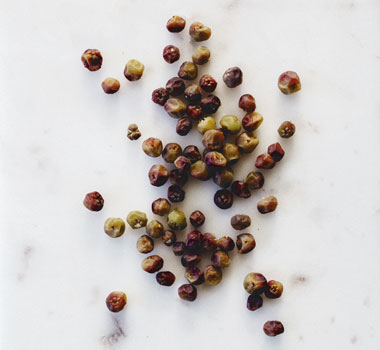

Muntries or Native apple (Kunzea pomifera)
Found on low-growing shrubs native to the south coast of Australia. Also called emu apple or native cranberry, they are known for their antioxidant value, which is around four times higher than that of blueberries. Much like they used to be traditionally, they can be used dried or pounded and made into a paste and dried into a strap. I love them fresh in salads.
Riberry (Syzygium luehmannii)
This tiny bright-pink berry is sweet and sour, spicy and almost clove-like. So mighty, it is said to be ace at preventing or delaying diseases such as Alzheimer’s, autoimmune and cardiovascular diseases, cancer and diabetes. Riberry also has high levels of vitamin B12.
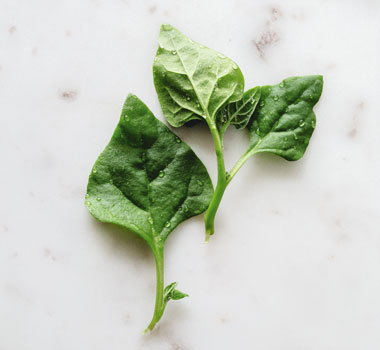

Warrigal greens (Tetragonia tetragonioides)
Also known as native spinach, New Zealand spinach or Botany Bay greens. The leaves must be blanched before eating, as they contain oxalates which in high quantities can have adverse effects. Simply blanch in boiling water for about 10–15 seconds, remove and refresh under cold water. They are naturally very high in antioxidants.
Sea parsley (Apium prostratum)
Although sea parsley is a close relative to the European version of parsley, it packs a more peppery punch and has much more flavour and health benefits too. In fact, it was used by early Australian settlers in the prevention of scurvy.